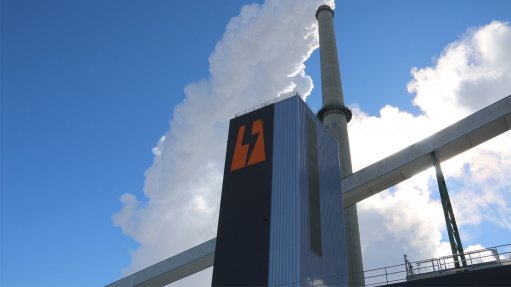
Photo by: SaskPower
A new laboratory to evaluate carbon capture and storage (CCS) technologies from around the globe was officially launched in Saskatchewan last week, giving global scientists direct access and practical data through one of the largest facilities of its kind in the world.
Electricity utility SaskPower had officially launched its Carbon Capture Test Facility (CCTF) in Estevan, offering international clients a unique platform for the testing of new and emerging technologies to capture carbon dioxide emissions from coal-fired thermal facilities.
Built in partnership with Mitsubishi Hitachi Power Systems, the CCTF is a high-tech laboratory that uses a small amount of exhaust (flue) gas from the neighbouring Shand power station and allows researchers to test equipment, chemical innovation or engineering designs in a precisely controlled environment.
The CCTF is a modular facility, where many individual parts can be isolated, modified and operated to test specific carbon capture technologies.
The sophisticated measurement tools and a data system will continually record operating conditions at 100 locations, allowing companies to track how their particular technology performs over time and in response to realistic commercial operating conditions.
The launch was attended by representatives from about 20 countries that were part of the Carbon Sequestration Leadership Forum, a global group of policymakers who met twice a year to discuss CCS potential around the world.
Mitsubishi Hitachi Power Systems will be the CCTF’s first client.
“We will be using our time in the CCTF to test our new amine solution. Amine is the chemical solvent at the core of many CCS processes, such as the one currently operating at Boundary Dam power station,” Mitsubishi Hitachi Power Systems senior executive VP Yasuo Fujitani said.
SaskPower president and CEO Mike Marsh noted that the utility needed a mix of sources to meet the ever-growing demand for power and in a way that balanced affordability, reliability and sustainability.
“CCS is part of that mix. SaskPower is a pioneer in this technology and we benefit from working with world technical leaders in this new facility to stay on the cusp of new and efficient CCS developments,” he added.
Federal Input
The Canadian federal government contributed C$1.3-million towards the design of the facility through Natural Resources Canada’s ecoENERGY Technology Initiative.
Ed Komarnicki, MP for Souris–Moose Mountain, on behalf of Canada’s Natural Resources Minister, Greg Rickford, last week congratulated SaskPower on the opening of its CCTF, saying that the federal government was committed to advancing CCS projects as part of its efforts to protect the environment and develop energy resources in a responsible manner.
Since 2008, the federal government had committed about $580-million to CCS technology research, development and demonstration initiatives. A total of $240-million was invested in SaskPower’s Boundary Dam project, the world’s first commercial postcombustion CCS project for coal-fired electricity, also situated in Estevan.
Since 2006, Canada had invested more than $1.1-billion in energy technology innovation, leveraging over $4.4-billion from more than 1 000 partners. The global market for clean energy was projected to double to $2.5-trillion by 2022 – about twice the size of the Canadian economy.
Canada’s clean technology industry, valued at about $11-billion, provided jobs for more than 49 900 people – a workforce that is expected to more than double to over 100 000 jobs by 2022.
Last year, Canada ranked sixth in the world with $8-billion in renewable-energy investments, up 23% from $6.5-billion in 2013.
Coal regulations introduced by the federal government are expected to result in a cumu- lative reduction in greenhouse-gas emis- sions of about 214-million tonnes – the equiva- lent of removing 2.6-million cars from the road each year.